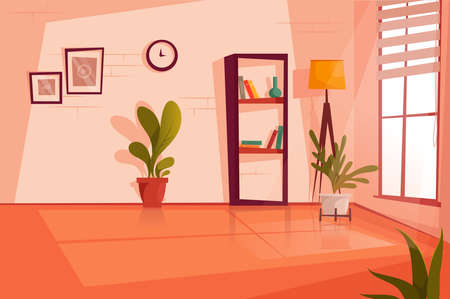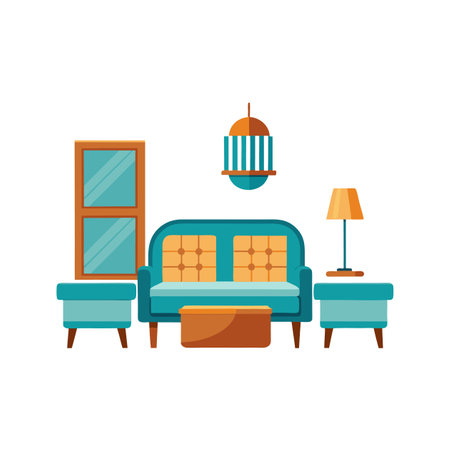Introduction to Scandi-British Fusion
The concept of Scandi-British interior design is a harmonious blend of Scandinavian minimalism and the distinctive heritage found in traditional British homes. This unique fusion draws on the clean lines, functionality, and understated elegance typical of Nordic spaces, while simultaneously embracing the warmth, craftsmanship, and storied character intrinsic to British interiors. At its core, this aesthetic philosophy seeks to strike a balance between simplicity and substance—paring back clutter without losing the sense of history or comfort that defines a truly British home. The result is an inviting atmosphere where modern practicality meets timeless charm, creating spaces that are both liveable and layered with meaning. By thoughtfully marrying these two design traditions, Scandi-British interiors offer a refreshing take on contemporary living that feels both relevant and rooted in heritage.
2. Material Selection: Natural Meets Timeless
When it comes to achieving the distinctive Scandi-British interior style, careful consideration of materials is absolutely essential. This design approach masterfully blends the Scandinavian appreciation for nature with Britain’s legacy of craftsmanship and time-honoured fabrics. The result is a home that feels both effortlessly fresh and rooted in heritage.
Natural Foundations
Scandinavian design has long championed the use of organic materials such as pale woods, soft leathers, and pure wools. These elements lend interiors a sense of warmth and tranquillity, echoing the forests and coastlines of Northern Europe. In a British context, these are paired with locally sourced hardwoods—think English oak or ash—that offer both durability and subtle character.
Classic British Textiles and Finishes
The British side of this hybrid aesthetic introduces beloved textiles like tweed, herringbone, and tartan. These patterns not only add visual interest but also bring a sense of tradition into contemporary spaces. Durable finishes—such as oiled wood floors, brushed brass fixtures, and robust wool carpets—ensure longevity while maintaining an inviting feel. The table below illustrates some typical material pairings for Scandi-British interiors:
| Scandinavian Material | British Counterpart | Combined Effect |
|---|---|---|
| Baltic pine flooring | English oak skirting | Light yet grounded base palette |
| Natural wool throws | Tweed cushions | Soft texture meets patterned tradition |
| Linen drapery | Tartan upholstery | Breezy minimalism with classic accents |
Durability with Aesthetic Value
This unique fusion does not simply cater to aesthetics; it prioritises practicality too. Durable finishes such as matt lacquers on woodwork or hard-wearing ceramic tiles ensure that beauty is matched by functionality—key for British households accustomed to changeable weather and active family life. In essence, the Scandi-British material palette creates spaces that are visually restful yet built to last—a true marriage of minimalism and heritage.

3. Muted Palettes and Layered Textures
One of the defining characteristics of Scandi-British interior design is the thoughtful use of muted colour palettes combined with a rich layering of textures. This approach draws from the Scandinavian love for light, neutral tones and the British tradition of tactile comfort. Subtle shades such as off-whites, soft greys, gentle taupes, and dusky blues serve as a versatile canvas that brightens up interiors while maintaining a sense of calm and openness—a particularly valuable trait in homes faced with the UK’s often overcast skies.
Layering is where this style truly comes alive. Incorporating textiles like linen, wool, and tweed—materials deeply rooted in both Nordic and British heritage—adds warmth and depth to each space. Linen throws draped across a sofa or bed evoke Scandinavian simplicity, while tweed cushions or a classic wool blanket on an armchair nod to quintessential British cosiness. These natural fibres not only provide visual interest but are also practical choices for everyday living, offering durability and ease of maintenance.
The understated nature of these textiles allows homeowners to experiment with subtle patterns or weaves without overwhelming the room’s aesthetic. In the Scandi-British scheme, texture replaces bold colour as the primary means of adding character. For example, a herringbone tweed footstool or handwoven jute rug can become focal points that are both functional and visually pleasing.
This balanced interplay between neutral hues and layered fabrics creates a welcoming environment that feels both contemporary and steeped in tradition. It encourages relaxation without sacrificing sophistication—a true testament to the harmony between minimalism and heritage at the heart of Scandi-British interior design.
Heritage Details and Modern Lines
One of the defining aspects of Scandi-British interior design is its ability to balance traditional British period features with the sleek minimalism of Scandinavian aesthetics. This harmonious blend gives spaces a unique character, where ornate elements coexist alongside modern simplicity. In many classic British homes, you’ll find architectural details such as cornicing, ceiling roses, sash windows, and original fireplaces. Rather than overshadowing these features, Scandi style enhances them by keeping the surrounding decor understated and functional.
Blending Old and New
The key is to let heritage details shine as focal points while maintaining an uncluttered environment. For example, a Victorian fireplace can become a striking centrepiece in a room furnished with clean-lined Nordic furniture and neutral palettes. The contrast between intricate mouldings and minimalist furnishings adds visual interest without feeling overwhelming.
Approaches to Achieve Balance
| Heritage Feature | Scandi Counterpart | How to Combine |
|---|---|---|
| Cornicing & Ceiling Roses | Sleek White Walls | Highlight ornate plasterwork by painting walls in soft whites or cool greys to keep focus on details. |
| Sash Windows | Light Linen Curtains | Use unadorned linen or cotton drapes to frame period windows, maximising natural light. |
| Fireplaces (Victorian/Edwardian) | Minimalist Hearth Accessories | Pair original fireplaces with simple hearth accessories and uncluttered mantels for a balanced look. |
| Parquet Flooring | Neutral Rugs | Add textured but plain rugs to highlight timber patterns without detracting from their beauty. |
The Result: Timeless Harmony
This approach creates interiors that feel both lived-in and refreshingly modern—celebrating the best of British craftsmanship while embracing Scandinavian restraint. By respecting period features yet resisting the temptation to overcrowd rooms with ornamentation, Scandi-British interiors achieve an inviting balance of warmth, elegance, and practicality.
5. Functional Spaces and Cosy Comfort
One of the defining features of Scandi-British interior design is its ability to create spaces that are both highly functional and deeply inviting. British homes, often characterised by their unique room layouts and sometimes compact proportions, require clever planning to ensure every square foot is utilised efficiently. Scandinavian influence comes into play with practical, open-plan arrangements that promote easy movement and multi-purpose use—think kitchen diners, integrated storage, and adaptable furniture that suits changing needs. Yet, this functionality never comes at the expense of comfort. To capture the true essence of hygge—the Danish concept of cosiness—soft textiles such as chunky knit throws, woollen rugs, and plush cushions are layered throughout living areas and bedrooms. Lighting also plays a key role; warm-toned lamps, wall sconces, and candles are strategically placed to create a soothing ambiance even during those long British winters. The result is a seamless blend: spaces that meet the demands of modern British lifestyles while enveloping inhabitants in the relaxed warmth typical of Scandinavian homes. By marrying streamlined utility with inviting touches, Scandi-British interiors offer a sanctuary that feels both practical and personal.
6. Sustainable Choices and Local Craft
One of the defining features of Scandi-British interior design is its commitment to sustainability and local craftsmanship. Both Scandinavian and British design philosophies value materials that are not only beautiful, but also responsibly sourced. Whether it’s FSC-certified timber for flooring or recycled wool textiles, eco-friendly choices underpin the aesthetic. By opting for locally-sourced woods like oak or ash, homeowners reduce their carbon footprint while embracing the natural grain and warmth these timbers bring to a space.
Eco-Friendly Materials at the Forefront
Modern Scandi-British interiors often showcase organic cottons, linens, and wool blends in soft, muted palettes. These fabrics are typically unbleached and untreated, emphasising purity and environmental responsibility. Natural stone, reclaimed brickwork, and clay-based paints further reinforce a home’s connection to both the landscape and sustainable living principles.
Celebrating Artisan-Made Elements
Handmade ceramics on open shelving, bespoke joinery, or woven baskets from local makers add character while supporting British artisanal communities. These pieces introduce unique texture and narrative into minimalist rooms, bridging functionality with heritage. The inclusion of handcrafted items ensures that each interior feels layered and personal—never sterile or impersonal.
Aligning Values Across Borders
The careful selection of sustainable materials and artisan-made accents allows Scandi-British interiors to embody the best of both worlds: the restrained elegance of Scandinavian minimalism with a deep respect for British tradition and craft. This approach not only results in spaces that feel calm and curated, but also champions ethical consumption—making every design choice matter for both home and planet.


